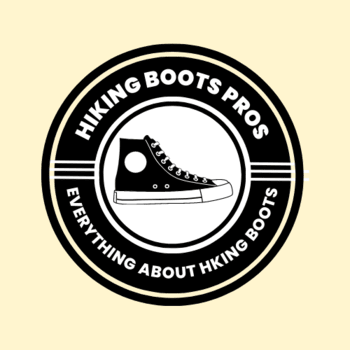Hiking is a great way to stay active and explore the great outdoors. However, one of the essential pieces of equipment for any hiking trip is a good pair of hiking boots. Hiking boots not only protect your feet from rough terrain but also provide the necessary support and comfort to make your hiking experience enjoyable. But how long can you expect your hiking boots to last?
The lifespan of hiking boots can vary depending on various factors, including the quality of the boots, frequency of use, terrain, and how well you maintain them.
In this blog post, we will explore the factors that affect the lifespan of hiking boots, the signs that indicate it’s time to replace them, and some tips on how to extend their lifespan. So, if you want to make the most out of your hiking boots and get the most value for your money, keep reading!
What Are the Factors Affecting the Lifespan of Hiking Boots?
Several factors can affect the lifespan of hiking boots, including:
Quality of Materials

The quality of the materials used to make hiking boots is one of the most significant factors that affect their lifespan. High-quality boots made with durable and sturdy materials such as full-grain leather or Gore-Tex can last longer than boots made with synthetic materials or lower-grade leather.
Frequency of Use
How often you use your hiking boots can also impact their lifespan. If you only use your boots occasionally, they may last longer than if you use them daily.
Terrain
The type of terrain you hike on can also affect the lifespan of your hiking boots. Hiking on rough and rocky terrain can cause more wear and tear than hiking on smooth trails.
Maintenance
Proper maintenance of your hiking boots can also help extend their lifespan. Regularly cleaning them and keeping them dry can prevent damage from moisture, while conditioning the leather can help keep it supple and prevent cracking.
Fit
The fit is also crucial. If your boots don’t fit correctly, they can cause blisters or other foot injuries, and they may wear out faster than if they fit correctly. Make sure to get your feet measured and try on several pairs to find the best fit for you.
What Are the Signs That Indicate It’s Time to Replace Your Hiking Boots?
While hiking boots can last for years, it’s essential to replace them when they show signs of wear and tear. Here are some signs that indicate it’s time to replace it:
Sole Wear
The soles of your hiking boots are one of the most critical components of the boot. As you use them, the soles will gradually wear down, losing traction and becoming less effective at providing support. If you notice significant wear on the soles, it’s probably time to replace your boots.
Upper Wear
The upper part of your hiking boots can also wear out over time. Especially if you frequently hike in rough terrain. If you notice significant scuffing or tearing of the upper material, it may be time to replace your boots.
Leaks
If your hiking boots are no longer waterproof, it’s time to replace them. Wet feet can cause blisters and discomfort, making hiking less enjoyable.
Lack of Comfort
Hiking boots are designed to provide support and stability to your feet, ankles, and legs. If you notice that your boots no longer provide the same level of support as they use to, it could be a sign that they are worn out and need to be replaced.
Bad Smell
If your hiking boots have developed an unpleasant odor that can’t be removed, it may be time to replace them. Odor can be a sign of bacteria that have taken up residence in the boots.
What Are the Tips on Extending the Lifespan of Hiking Boots?
Hiking boots are a significant investment, so it’s essential to take good care of them to ensure they last as long as possible. Here are some tips on how to extend the lifespan of your them:
Clean Them Regularly
Dirt and debris can accumulate on the surface of your hiking boots, leading to faster wear and tear. Cleaning them regularly with a soft brush and mild soap can help prevent this. Be sure to dry them thoroughly after cleaning.
Waterproof Them
Moisture is one of the biggest enemies of hiking boots, can cause the materials to break down and weaken. Applying a waterproofing treatment to your boots can help repel moisture and extend their lifespan.
Store Them Properly
When you’re not using your hiking boots, it’s essential to store them in a cool, dry place away from direct sunlight. Avoid storing them in a damp environment, as this can encourage mold and mildew growth.
Replace Insoles
Insoles can wear out over time, causing discomfort and reducing support. Replacing the insoles periodically can help extend the lifespan of your boots and keep them comfortable to wear.
Use them for the Right Activities
Hiking boots are designed for specific activities and terrains, and using them outside of their intended purpose can cause excessive wear and tear. Make sure to use your hiking boots for the activities and terrains they were designed for to maximize their lifespan.
Rotate Your Footwear
Using the same pair of hiking boots day after day can cause them to wear out faster. Rotating between two or three pairs of boots can help extend their lifespan by giving each pair time to rest and recover.
Read about this one: What materials are commonly used in hiking boots
Conclusion
In conclusion, the lifespan of hiking boots can vary based on several factors, including the quality of materials, frequency of use, terrain, and maintenance. It’s essential to replace your hiking boots when they show signs of wear and tear, including sole wear, upper wear, leaks, and lack of comfort. However, you can extend the lifespan of your hiking boots by properly storing them, cleaning, conditioning, waterproofing, and rotating them with another pair.
FAQs
The life of hiking boots varies depending on factors such as frequency of use, terrain, and maintenance, but on average, they can last between 500 and 1000 miles.
Merrell boots can last anywhere from 500 to 1000 miles, depending on how often they are used and how well they are maintained.
If you notice worn-out soles, holes, or tears in the upper material, loss of support, or reduced traction, it’s time to replace your hiking boots.

Tyler Looney is an avid hiking enthusiast and the author of HikingBootsPros.com, a website dedicated to providing helpful insights and advice on choosing the best hiking boots. His expertise and passion for hiking have made him a valuable resource for both beginner and experienced hikers alike.

